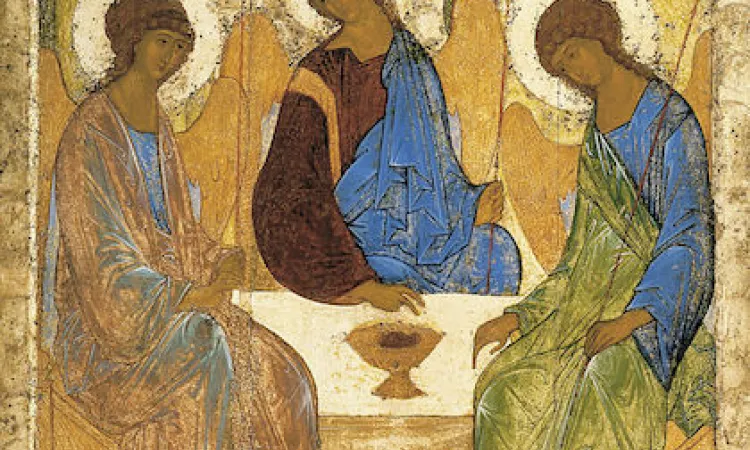The phrase, "fear of the Lord" is sometimes used in conjunction with the phrase, "the glory of the Lord." Fear of the Lord occurs throughout the Bible. (Gen 42:18; Ex 1:17; 9:20; 18:21; Deut 5:29; 6:2; Ps 25:14; 102:15; 111:5; Prov 3:7; 24:21; 31:30; Eccl 5:7; 8:12; 12:13; Is 41:10; 50:10; Jer 5:24; Dan 6:26; Lk 1:50; Acts 10:2; Rev 15:4).
The noun fear, whose Latin counterpart is tremor, connotes emotional trepidation, and the adjective terrible, also from the Latin terribilis, has been imprecisely transliterated as terrible or dreadful. These words impose on the phrase, fear of the Lord, not only a negative connotation but also a meaning opposed to its original intent.
Fear of the Lord means awe of Divine Mystery connoting reverence at the mysterium, the "Holy, Holy, Holy" of God. It causes the soul to shudder from its overpowering reality, and yet it draws the soul into the tremendum, a moment of rapture to it. God's absolute holiness is at once love, beauty, mercy, wonder–words incapable of being adequately expressed, but which we experience as fascinosum, unspeakable bliss.
Fear of the Lord is awe, marvel, wonder, majesty, and astonishment–glory. Filial fear refers to a fear of offending God because of His great glory. On this Trinity Sunday, the tri-personal God is celebrated as the pre-eminent model for all other relationships. Glory not only transcends every word, all speech, every category, and every expression of Jesus' hiddenness but also his manifestation. And "we have seen his glory, the glory as of the Father's only Son, full of grace and truth" (Jn 1:16). Divine glory is God.
More in The Way of Beauty
Rublev's Old Testament Trinity: the Hospitality of Abraham and Sarah
The icon of the Old Testament Trinity was painted by the Russian monk Andrei Rublev (1370-1430). He uses the Old Testament story of the hospitality of Abraham and Sarah (Gen 18) as a point of reference pointing to the mystery of the Most Holy Trinity.
In the scripture narrative, the couple are hosts to the three angel-visitors at Mamre who will foretell the birth of Isaac to the elderly couple. The angels are seated at a table on which stands a cup with a sacrifice offering. The angels hold traveling staffs. Abraham and Sarah are not in the icon.
The Icon Proper
The basic form of this icon representing the Trinity is a circle. It is seen in the bowed figure of the angels deferring to one another. Their wings touch each other as a trinity, while the hands of the two outer angels lean toward the center angel who commands attention. The circular shape of the picture surrounds the cup and calls attention to it, the symbol of the Eucharist. The angels wear blue and green in varying degrees of intensity to symbolize unity in color.
The center angel is Jesus, clothed in strong, clear colors because of his coming in history. He wears a magenta tunic with a gold ribbon draped over the shoulder under the cloak of solid blue-green. Because human eyes have never seen the Father, Rublev has chosen indistinct hues of pale orange colored with a tint of blue-green for the Father's clothing.
Wearing a green cloak over a tunic of azure blue, the Consoler-Spirit symbolizes life and sanctification. With the other two figures, Jesus blesses the cup with the stylized Eastern blessing. The facial features of the three figures suggest a set of identical triplets marked by dignity and rare beauty. The raised eyes of the Father appear anxious because of the sacrifice his Son will accept. The unity brought about by the clothing and circular form and motif of the composition reveals Rublev's masterful insight into the mystery of the tri-personal God.
(Column continues below)
Subscribe to our daily newsletter
The icon offers deep satisfaction because through color, form, and symbol, we grasp with delight the truth of the central mystery of Catholic Christian faith. Its loveliness has captured the admiration of the Christian West, thereby surpassing abstract Trinitarian symbols. The beauty, truth, and formal goodness of the icon invite one's contemplation and a resolve to live in the presence of the life-giving Trinity, Father, Son, and Holy Spirit. One way to do this is carry about in our imagination this work of art that nourishes the life of prayer.
Image credit: The Trinity by Andrei Rublev via Wiki Commons.


